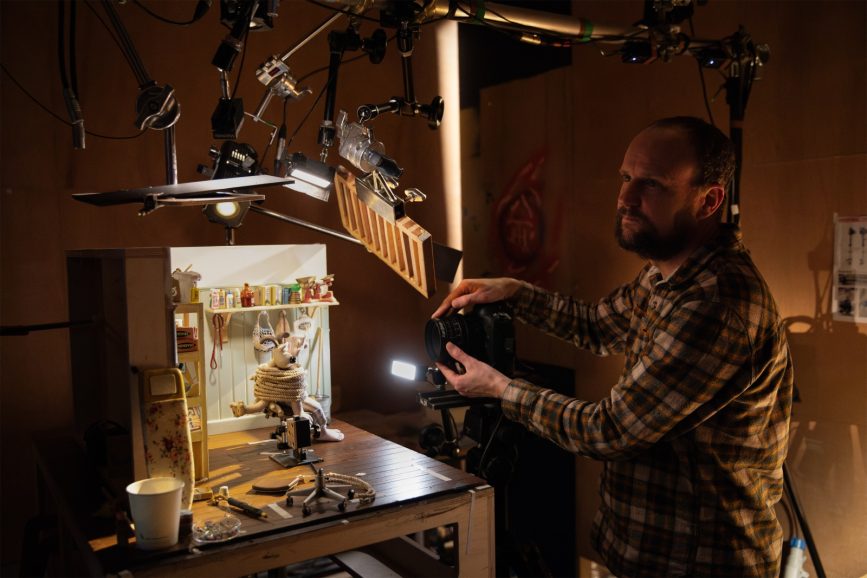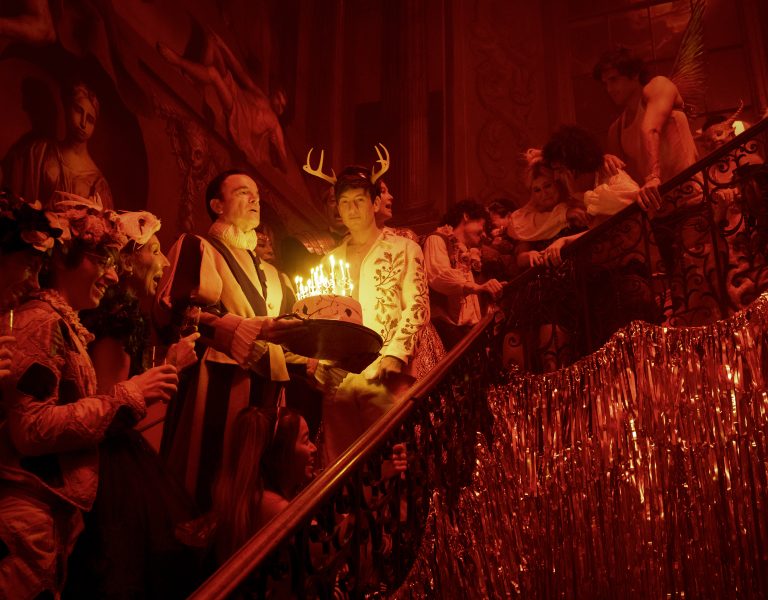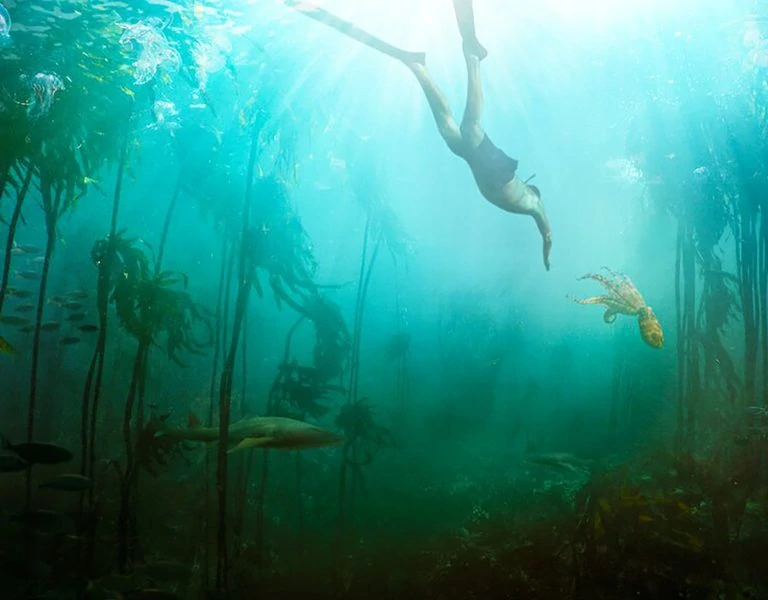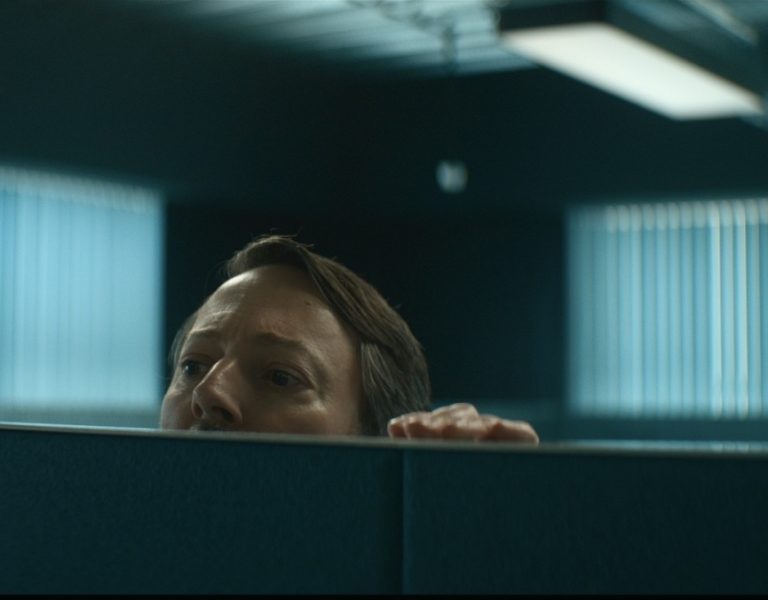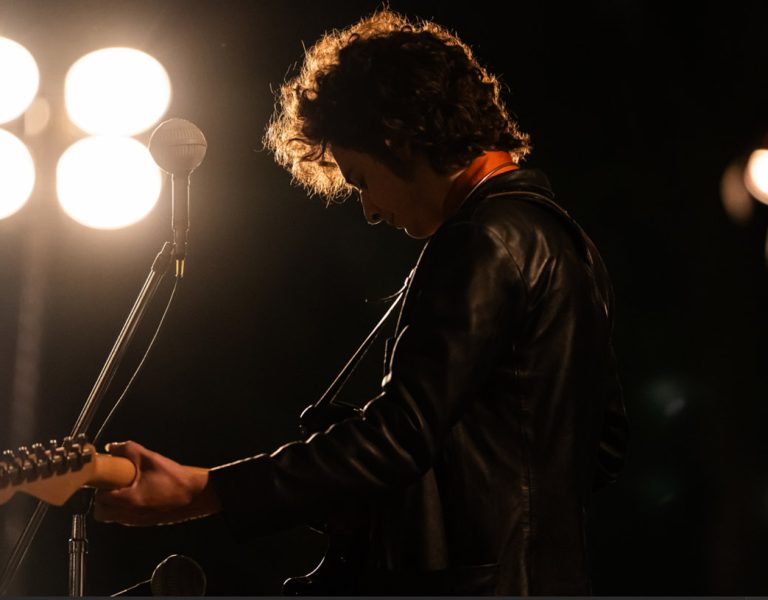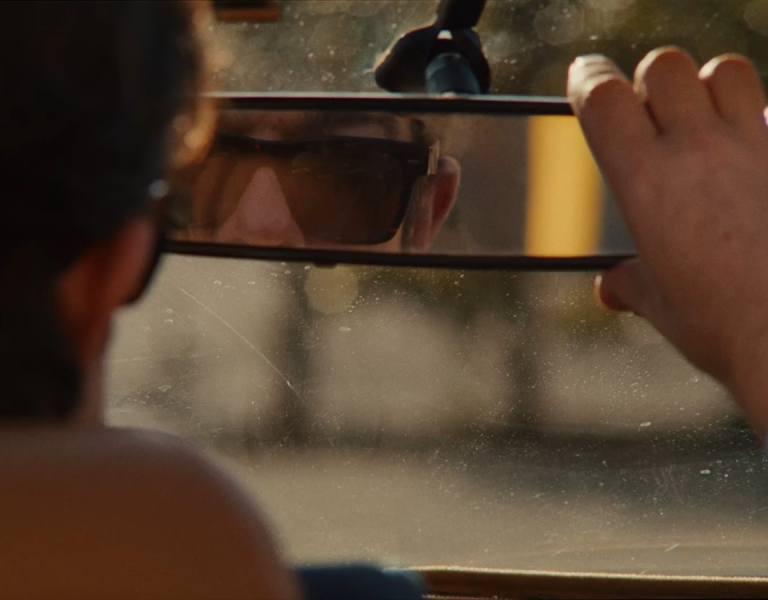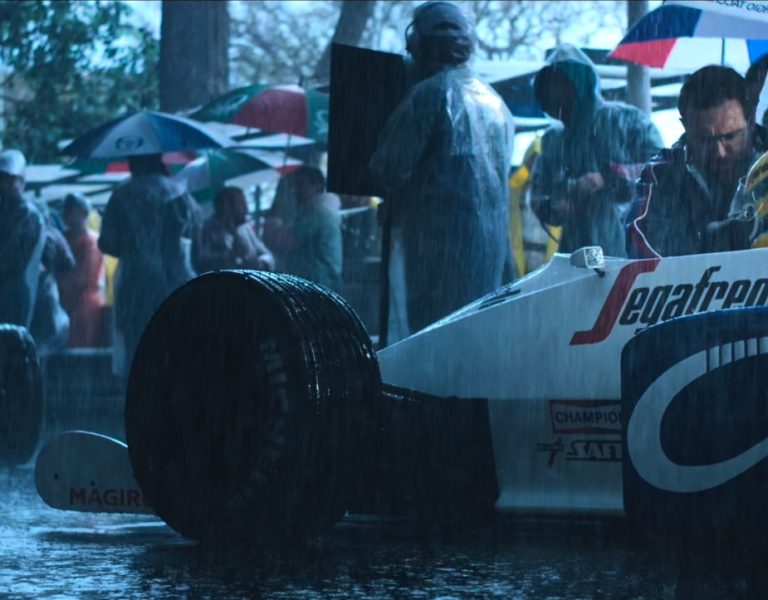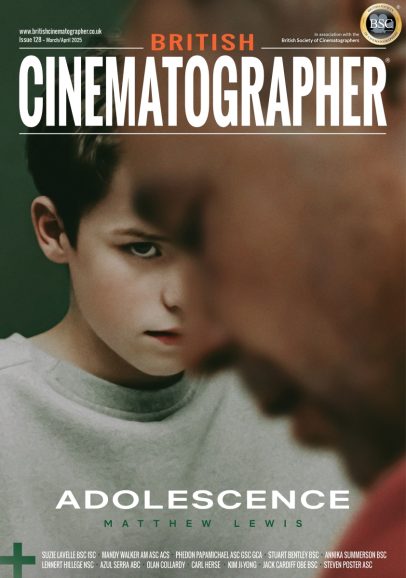NATIONAL TREASURE
Having been involved in Aardman’s stop-motion productions since The Wrong Trousers, Dave Alex Riddett BSC has a deep knowledge of capturing the trademark handcrafted look. He shares why practical magic is still at the core of Wallace & Gromit’s world in their latest adventure.
Industry advances have driven some stop-motion techniques since Dave Alex Riddett BSC was part of the Aardman team behind classic Wallace & Gromit: The Wrong Trousers (1993), but the handcrafting at the heart of those movies still influence filmmaking to this day. “Back then there were no real post special effects – they were mostly practical,” he says. “Aside from a few in-house rain overlays and double exposures, everything was in front of the camera.”
This practical ethos produced a look that has become recognised and admired around the globe and Riddett is adamant the team still tries to capture that essence. “I insist, wherever possible, we still build things in front of the camera and film them because it affects the aesthetic.”
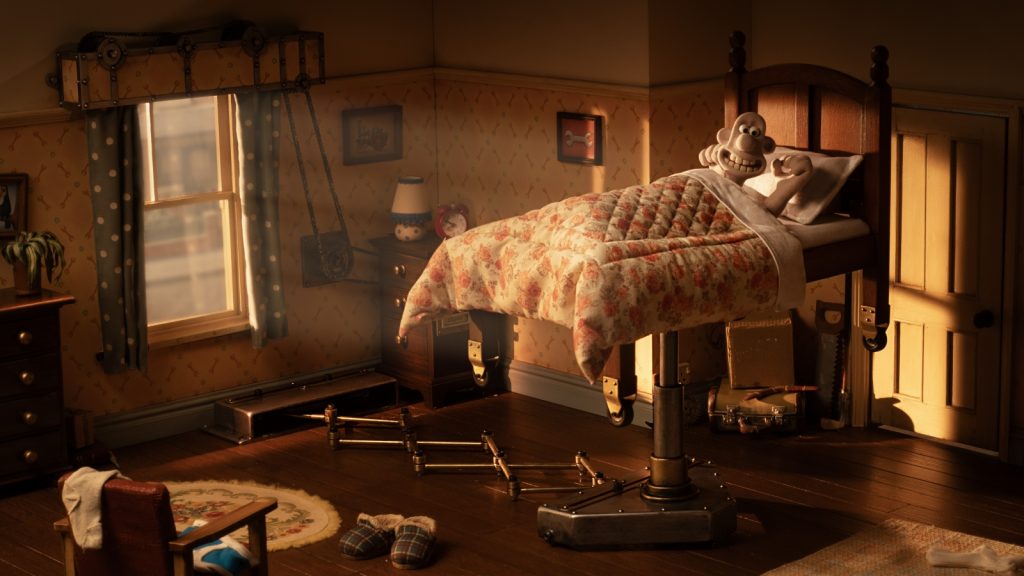
This was true of Aardman’s latest crafty creation, Wallace & Gromit: Vengeance Most Fowl, in which Gromit is concerned Wallace has become over-dependent on his inventions when he creates a smart gnome called Norbot that seems to develop a mind of its own.
When Riddett and the team – including writer/director and Wallace & Gromit creator, Nick Park, and LC Tristan Oliver BSC – made A Close Shave in 1995, the film featured seven effects shots. “We digitised the image so the rig holding puppets on a few flying shots could be removed digitally. By The Curse of the Wear-Rabbit in 2005 everything could be digitised, even though we still shot on film, and rig removal was even easier,” says Riddett. “Although amazing technical advances speed things up, they can slow down shooting as the visual effects team requires many passes of shots to facilitate what they do.”
One requirement has remained constant – that each shot is repeatable. Dragonframe software makes this possible and Riddett used it more on Vengeance Most Fowl than any other film. The central control tool is perfect for animators and cinematographers as it allows Riddett “to capture images and control lights and to a certain extent the camera moves as it can also drive motion control equipment”.
Dragonframe captures multiple exposures, so each frame could have a different set of key lights. The Chicken Run: Dawn of the Nugget team in some shots took up to 16 exposures for each frame to aid the VFX team and allow the directors to change certain aspects. While purist Riddett did not want to do that on this film, “it was very useful to have alternate key lights or different levels to help in the final grade”.
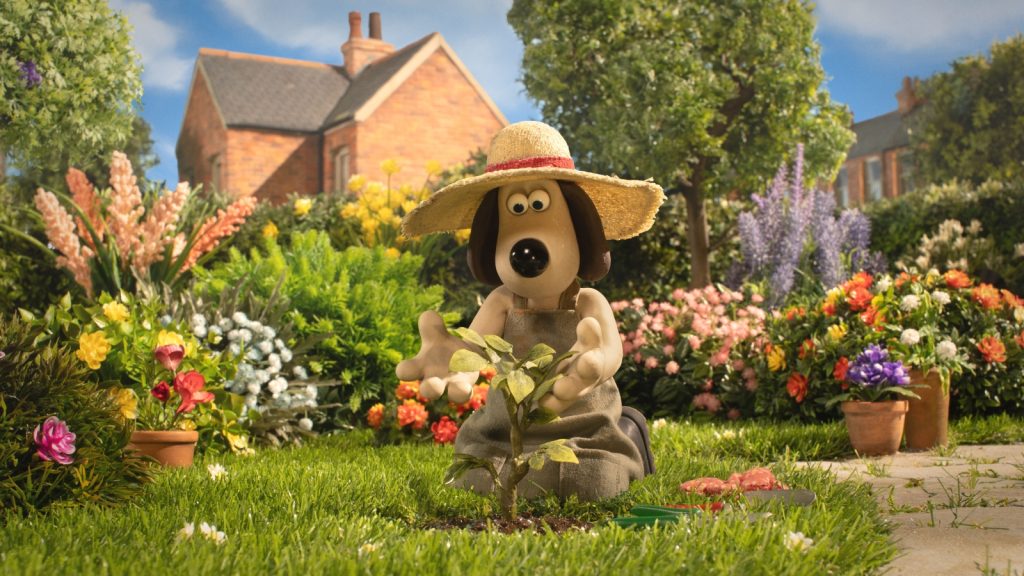
An alternate reality
Following a few months of testing, the shoot lasted 15 months, with a deadline to hit so the film could be broadcast on the BBC on Christmas Day. Having shot all of Park’s films, Riddett is trusted by the writer-director to deliver the desired look. On this occasion Park was joined by co-director Merlin Crossingham, with both filmmakers heavily involved in all aspects of the production.
The Wallace & Gromit films are an “homage to cinema and TV”, allowing the team to swap genres. “Nick hasn’t stolen ideas, he’s been inspired by and reinterprets them to tell his tale,” says Riddett. “As a cinematographer, I adore it because you play with so many styles. In this film we have influence from Cape Fear, 20,000 Leagues Under the Sea, The Matrix, Hammer Horror, Powell and Pressburger, Kubrick, Hitchcock, and even our own films.”
During prep, Riddett creates a scrapbook of images based on Park’s references and other visuals, forming a unified vision across the team. Park and Crossingham were keen to expand on the Wallace & Gromit look, so the cinematographer’s focus was “to make sure we didn’t lose anything and allow for new ideas”.
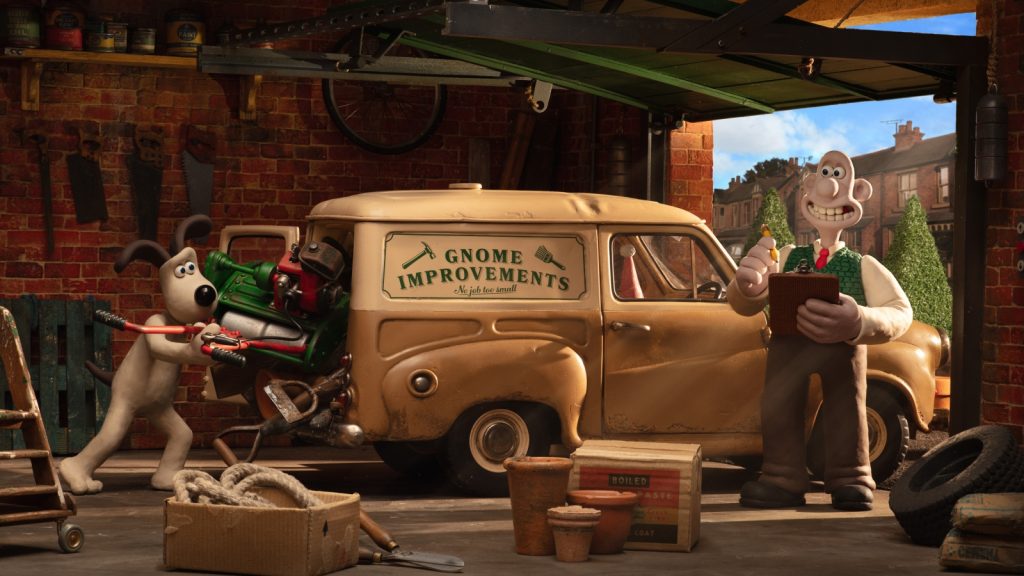
Visual effects were incorporated, especially in sequences featuring a lot of water such as a chase scene on a canal. Riddett is wary of adding water or fire effects which are too realistic and do not fit into the world created, taking the audience out of the stop-frame reality created: “Rather than trying to create real life, we’re creating an alternative reality specific to these characters, so it’s important everything is true to the characters and look.”
But despite initial concerns over the visual effects water in the chase scene, Riddett was impressed by the results. “The visual effects team delivered amazing effects that married well with Wallace & Gromit’s world. The directors rely on me to help tell the story, give it atmosphere, but also keep that spirit of Wallace & Gromit alive,” says Riddett, who chose visual effects director, Howard Jones, because “he’s keen to keep that Wallace & Gromit look and not get too carried away with post effects”.
The animators still take great delight in achieving some water-focused sequences practically, using clear plastic to create water splashes, frame by frame. “Liquid pouring from a teapot is still done the old way, animating crinkled cellophane, because that’s a trope of Wallace & Gromit people expect,” adds Riddett.
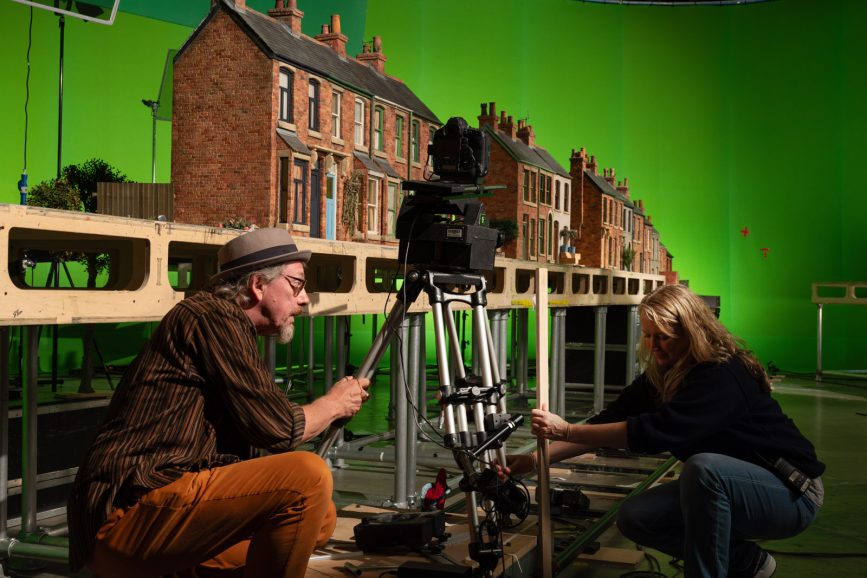
Model characters captured by Riddett’s team have not changed hugely over the years. When making The Wrong Trousers almost everything was sculpted in front of the camera whereas now mouth shapes are pre built and then slotted in and blended into the faces. “We still keep the emphasis on what the animator is doing in front of the camera. It’s a performance and those pre-built mouth shapes help facilitate and speed it up, but all the fine sculpting is live in front of the camera,” he says.
Some characters are now made of silicone. In all previous films Gromit was totally plasticine, but Vengeance Most Fowl marks the first time he is sometimes made from silicone to speed up shooting. “For any wide shots, where we could, we worked with a silicone Gromit,” says Riddett. “Quite often Gromit might have a silicone body and plasticine hands to allow all the detail in the fingers to be captured. This also requires a lot of testing because the colour of plasticine and silicone is not the same under certain lights, so I shoot them under white, blue, and then warm light to see how the materials react.”
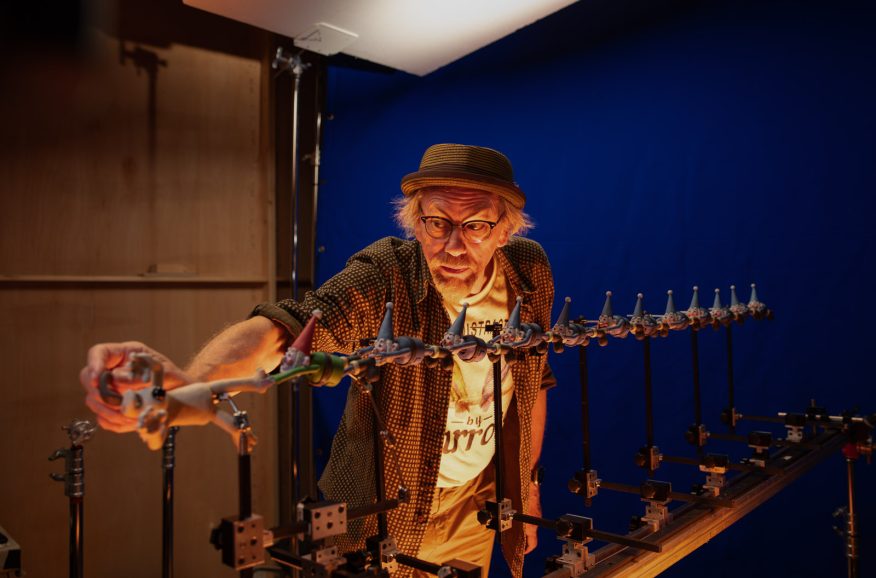
Dream team and tools
During prep, colours, techniques, and tools were decided along with which shots may require collaboration with the visual effects team, and which lighting cameraperson would shoot which sequence as Riddett worked with cinematographers Charles Copping and Laura Howie.
With up to over 40 units on the go, a vast number of people was needed to handle the shoot. Riddett’s team comprised more than 20 people including two senior lighting camera people (SnrLC) Charles Copping and Laura Howie, lighting camera people Beth McDonald, Sam Morris and Daniel Morgan, Riddett’s mentee from the National Film School who was initially brought in for eight weeks but impressed him so much he was kept on.
Gaffer Sally Wattiaux looked after a copious amount of sets, studio gaffer Alan Barr handled many of the practicals, joined by four further sparks. Riddett highlights camera assistants as essential team members who “do a great deal of the work – they set the cameras and some of the moves up, help the motion control team, data wrangle, and look after a wide range of equipment”. Headed up by Joe Maxwell, at least six camera assistants were working at any point.
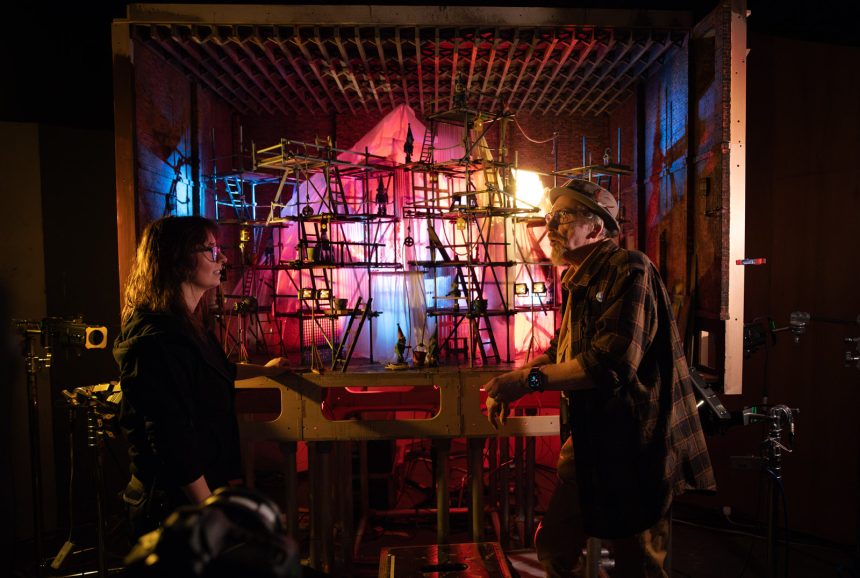
The motion control team, headed by lead motion control operator Linda Hamblyn, play a pivotal role in the storytelling, “achieving remarkable camera moves helping the audience feel like they can travel through the sets”. Rigs hold puppets up as multiple shots are taken before being removed digitally, so all equipment has to be completely accurate and reliable to achieve repeatability.
Many motion control tools have remained consistent from Aardman’s early productions such as Mark Roberts Motion Control’s Milo motion control rig – a large camera crane originally designed for 35mm film cameras. “We’ve also adapted some kit and built motion control heads, and a few specialised trackers with risers to facilitate certain shots such as tracking along the inevitable elongated room,” adds Riddett.
The crew used the trusty Canon EOS 1D X MK III, having filmed with Canon cameras since making the move from film to digital with A Matter of Loaf and Death in 2008. The Canon cameras – which are responsive to the colour palette Riddett tends to use in Wallace & Gromit films – are paired with old Nikon lenses which must be completely manual rather than automatic, offer macro focus, and pull apertures in a way that can be accurately controlled. Across the 40 sets around 60 cameras were used, so Aardman technical manager, Tom Barnes, travels the world searching for Nikon lenses which are sent to Japan, rebuilt and rehoused so they will close focus.
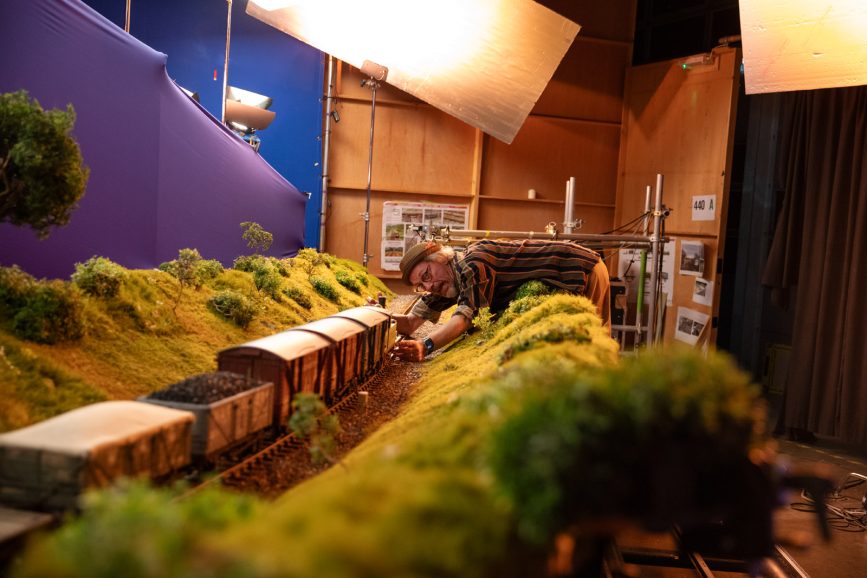
Since shooting The Wrong Trousers, Riddett’s favourite light has been the Altman Micro Ellipse – an architectural light based on the profile lights predominantly used in theatre. “It has shutters, you can focus it sharply, put gobos in it and it’s miniature – almost the scale of the characters – so it’s perfect,” he says.
Although the lamps are no longer made, ETC Source Four released an equivalent – a small LED profile lamp called the Source Four Mini and Aardman has converted most of its Micro Ellipses to LED. The crew also worked with ARRI 300 and 650 Plus tungsten Fresnel spotlights – mainly 1K or up to 5K for a big moonlight or daylight scene.
LED strip lights were bespoke light fittings and sometimes illuminated whole sets such as the zoo set and Wallace’s elongated bathroom and hallway which needed to be evenly lit. “You have to diffuse them quite a bit so you don’t get multiple shadows,” explains Riddett. “We look for an even spread of light, and lights that can burn for a long time as some shots take a week to capture. Many modern LED fittings are great as when using the old incandescent lights it was a problem when a bubble blew in the middle of a shot.”
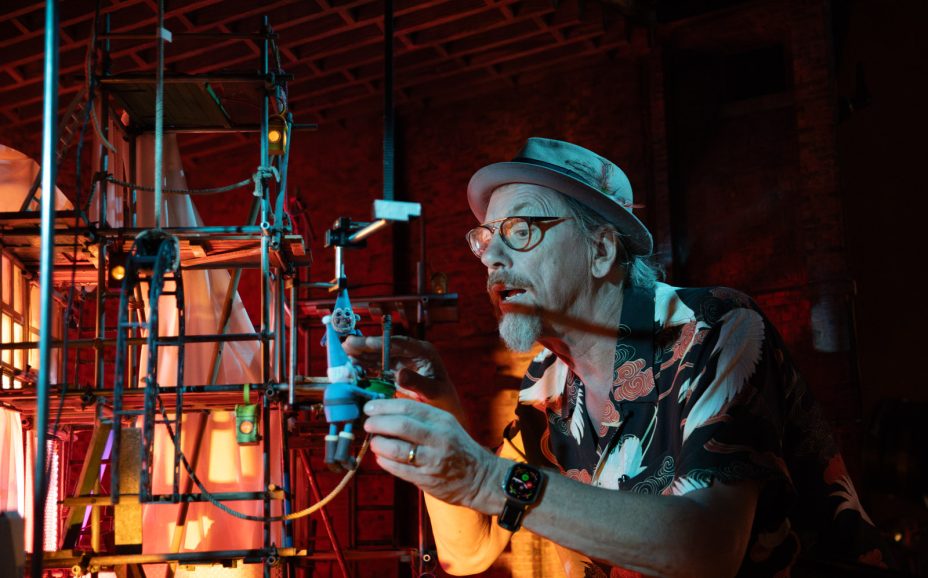
The magic of stop-motion
The most complex sequence Riddett worked on was a climactic chase beginning at night and moving onto the canal until sunrise. It required breaking down into stages – nighttime shot with blue light as the boat leaves the wharf, later shots lit with white light, before introducing amber light towards the end.
Dragonframe helps shoot such sequences as alternate versions of every frame can be captured. Often a beauty pass – how Riddett or the LC thinks the scene should look – was captured as well as shooting key light and ambient light separately. Although he is “sort of grading on the floor because you can control everything”, Riddett spent more time on this scene in the final grade with colourist Max Horton than any other Wallace & Gromit to ensure it gelled together.
The boat chase also marked the first time the team captured array plates for the background using motion control equipment, putting tracks up, building the length of set, and tracking the camera down. The team spent several weeks setting it up and several days shooting to produce backgrounds for multiple shots. Each frame was captured in several positions and lighting conditions and sent to the effects team to make an array plate of that background. Due to the length of backgrounds, shooting each shot individually wouldn’t have been possible in the time available.

Sequences cinematographer Laura Howie shot included much of the opening montage in the kitchen and dining room as a jam machine helps make breakfast, a hallway sequence where Gromit first sees Norbot in a sinister light which Howie kept quite dark with patterns of light from the stained-glass window, and some of the long canal chase sequence involving a lot of changing light.
Among the sequences she enjoyed working on most was the interior of the submarine and a shot beginning as a close-up of returning character – and main antagonist from The Wrong Trousers – Feathers McGraw, as he turns villainously towards the camera, before tracking back to reveal the whole submarine interior. As the camera travels over the pool table, the Norbots push a model submarine towards the camera and reveal their plan.
“The tracking shot was the first thing we shot for this sequence and as we would see the whole set it would establish the lighting for the rest of the sequence. The set was built in modular sections, so parts could be removed while shooting, but I had to work out a plan for the set as a whole and involved hiding a lot of lights within the structure,” says Howie, who sees the cinematography of Wallace & Gromit films as using light to allow the ordinary to become magical.
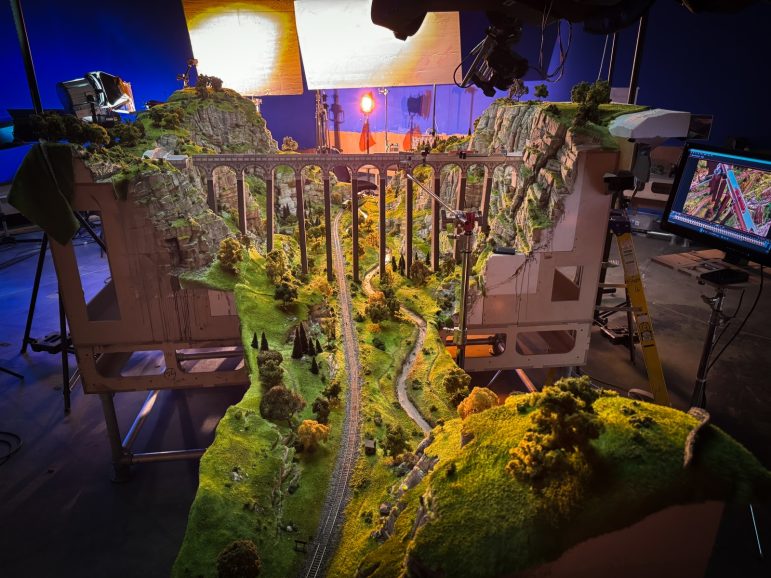
Howie wanted to use a minimum amount of fill as the camera would be very close to Feathers and block any lights coming from the front of the set, creating a large camera shadow. “The inside of the set was only a couple of feet high and with the pool table in place, the camera and its rigging would take up most of the remaining space,” she adds.
To make Feathers look dramatic she back lit him with small LED lights attached to the decorative bar at the top of the set. “My spark, Dan Lewis, attached these to aluminium wire, allowing me to position them accurately. I used a Dragoneye light from the side to light his face and give the red wash of light over the back of the submarine. These lights are small enough to be hidden by structures within the set. Another Dragoneye was a spotlight over the pool table,” she explains.
“I wanted to highlight the beautiful set dressing while revealing what the Norbots were up to, so I used a COB LED strip light above the submarine’s interior machinery, with marine blue, to give a nautical feel. The dials and screens were backlit by Altman Ellipses, and small LEDs, through holes drilled in the set.
“It was shot on a 20mm lens so we were in the set with the characters and could see as much of the submarine as possible. The camera would need to travel as close as possible to the pool table as the objects on the table, which were only about a centimetre tall, would become the focus of the shot,” says Howie, who spoke to Linda Hamblyn, lead motion control operator, about extending the camera out in front of the track, so it was effectively just a camera on a stick.
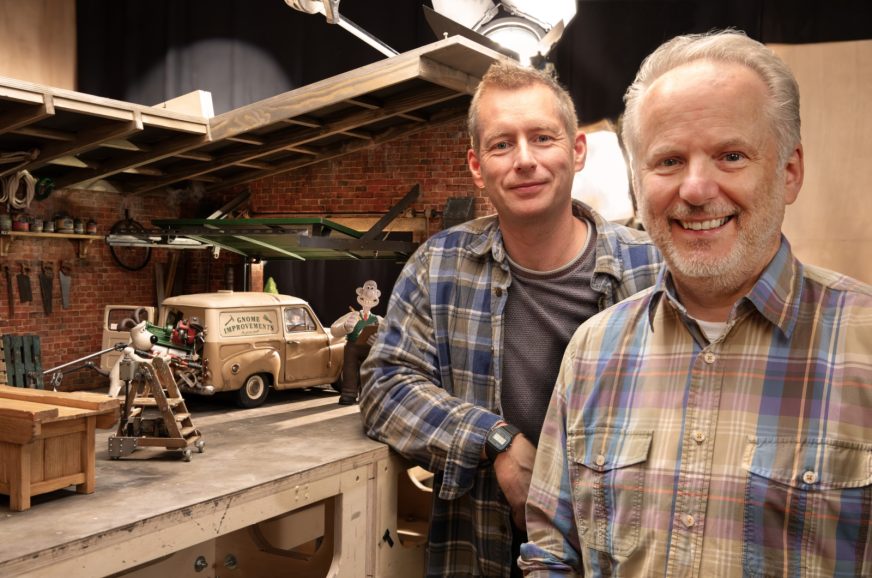
“Linda worked with our engineers to build a rig that did just that. We had to shoot in sections as the enclosed set made animator access impossible. The Norbots were shot in several passes, with opposing walls removed for access, and then more set was removed to get access to Feathers. The set was all real and everything was shot in place so the challenge, and most interesting part, was getting it all to work in-camera.”
Copping shot sequences including much of the cellar scenes, Gromit’s pursuit of the Norbots on his motorbike, outside the Zoo in the fog, Wallace and Gromit tied up in the cupboard, the submarine in the sewers, and the Norbot army marching in menacing unison and emerging from the basement.
“The challenging shot of the army approaching Wallace required 36 Norbots marching in synch filling the cramped hallway. Rather than individually animating all 36 Norbots, we created a mechanised rig allowing us to animate only four,” he explains.
“When the front four Norbots were in their correct animated position a frame was taken and then the rig took them to the position of the second row, a frame was taken, and then the rig moved them to the third row. This was repeated until we had plates for all nine positions. The animator then moved the front four to their next animated position and repeated the process. These plates were then stacked by VFX to make the final shot.”
Howie first worked with Aardman on Curse of the Were-Rabbit and Copping’s first job at Aardman was 30 years ago as a runner on A Close Shave. Riddett considers them essential to the success of the productions they have been part of, referring to them as “the next generation of stop-motion DPs”.

Preserving the look
Choosing the practical route where possible was crucial when shooting a scene featuring the Norbots and Matrix-style projected numbers. Riddett reinforced that rather than relying on visual effects, if they wanted projected numbers, it would be best to do it that way. Visual effects supervisor Howard Jones created changing numbers which were projected onto the Norbot puppet using a small video projector. Stop frame back projection was also used for the Norbots industrial construction scene in the basement.
The charm and magic of the tangible and practical aspect of stop-motion filmmaking is why it is still so popular today, demonstrated by, at the time of writing, Vengeance Most Fowl’s nominations for Best Animated Feature at multiple upcoming awards such as the Golden Globes, Critics Choice, and Astra Film Awards.
“People recognise and enjoy stop frame for what it is – physically there. You can stick your hand in it, you can visit it. It’s not all on a screen, it has that personal handcrafted touch,” says Riddett. “People try to compare stop frame to CGI, but CGI is a very different technique and happens in layers. With our approach, lots of different people are creating the elements of a shot but they all meet in one physical point. It’s a performance. I love the physicality of stop frame and commitment and joy surrounding it – that creates the aesthetic and texture people recognise. For me, one of the delights of stop frame cinematography is problem solving but the biggest reward is still physically lighting those wonderful sets.”
Riddett considers Vengeance Most Fowl one of the most joyous shoots which captured the same magic of creating The Wrong Trousers. “Nick and Merlin were on the floor every day and had direct contact with the entire crew,” he says. “It felt like a shared joy and everybody put so much into it. Some – including Laura [Howie] and Charles [Copping] – pointed out they got into this business because they saw The Wrong Trousers and aspired to work on films like that, so they were incredibly proud to play a part in the latest Wallace & Gromit story.”
Wallace & Gromit: Vengeance Most Fowl is now available on BBC iPlayer and on Netflix globally, outside of the UK.
